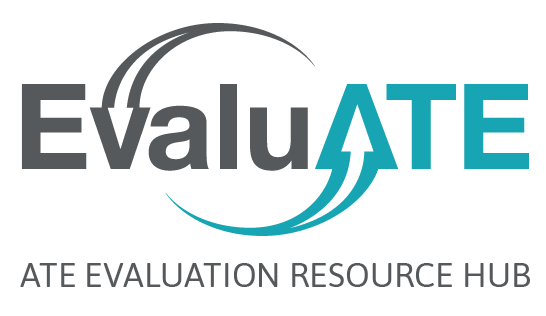
In this essay, I identify what helps me create a strong evaluation plan when working with new Advanced Technological Education (ATE) program partners. I hope my notes add value to current and future proposal-writing conversations.
Become involved as early as possible in the proposal-planning process. With ATE projects, as with most evaluation projects, the sooner an evaluator is included in the project planning, the better. Even if the evaluator just observes the initial planning meetings, their involvement helps them become familiar with the project’s framework, the community partnerships, and the way in which project objectives are taking shape. Such involvement also helps familiarize the evaluator with the language used to frame project components and the new or established relationships expected for project implementation.
Get to know your existing and anticipated partners. Establishing or strengthening partnerships is a core component of ATE planning, as ATE projects often engage with multiple institutions through the creation of new certifications, development of new industry partnerships, and explanation of outreach efforts in public schools. The evaluator should take detailed notes on the internal and external partnerships involved with the project. Sometimes, to support my own understanding as an evaluator, it helps for me to visually map these relationships. Also, the evaluator should prepare for the unexpected. Sometimes, partners will change during the planning process as partner roles and program purposes become more clearly defined.
Integrate evaluation thinking into conversations early on. Once the team gets through the first couple of proposal drafts, it helps if the evaluator creates an evaluation plan and the team makes time to review it as a group. This will help the planning team clarify the evaluation questions to be addressed and outcomes to be measured. This review also allows the team to see how their outcomes can be clearly attached to program activities and measured through specific methods of data collection. Sometimes during this process, I speak up if a component could use further discussion (e.g., cohort size, mentoring practices). If an evaluator has been engaged from the beginning and has gotten to know the partners, they have likely built the trust necessary to add value to the discussion of the proposal’s central components.
Operate as an illuminator. A colleague I admire once suggested that evaluation be used as a flashlight, not as a hammer. This perspective of prioritizing exploration and illumination over determination of cause and effect has informed my work. Useful evaluations certainly require sound evaluation methodology, but they also require the crafting of results into compelling stories, told with data guiding the way. This requires working with others as interpretations unfold, discovering how findings can be communicated to different audiences, and listening to what stakeholders need to move their initiatives forward.
ATE programs offer participants critical opportunities to be a part of our country’s future workforce. Stakeholders are passionate about their programs. Careful, thoughtful engagement throughout the proposal-writing process builds trust while contributing to a quality proposal with a strong evaluation plan.

Except where noted, all content on this website is licensed under a Creative Commons Attribution-NonCommercial-ShareAlike 4.0 International License.





 EvaluATE is supported by the National Science Foundation under grant number 2332143. Any opinions, findings, and conclusions or recommendations expressed on this site are those of the authors and do not necessarily reflect the views of the National Science Foundation.
EvaluATE is supported by the National Science Foundation under grant number 2332143. Any opinions, findings, and conclusions or recommendations expressed on this site are those of the authors and do not necessarily reflect the views of the National Science Foundation.